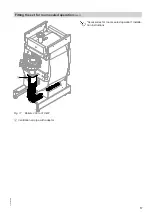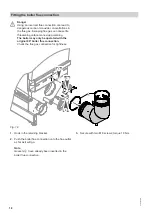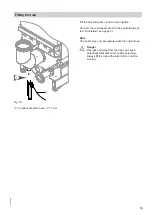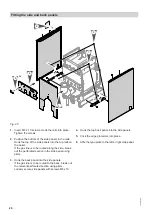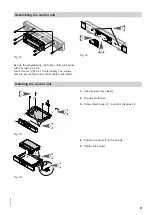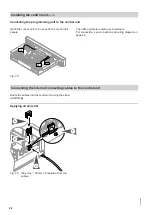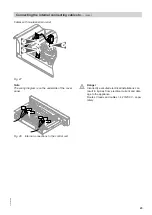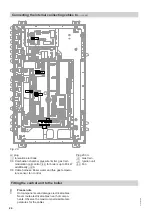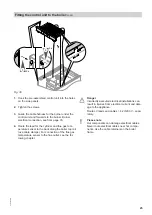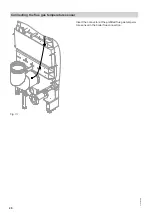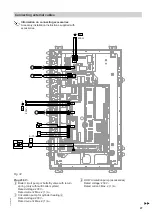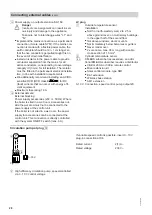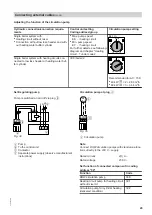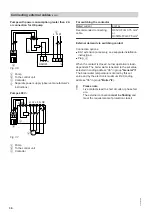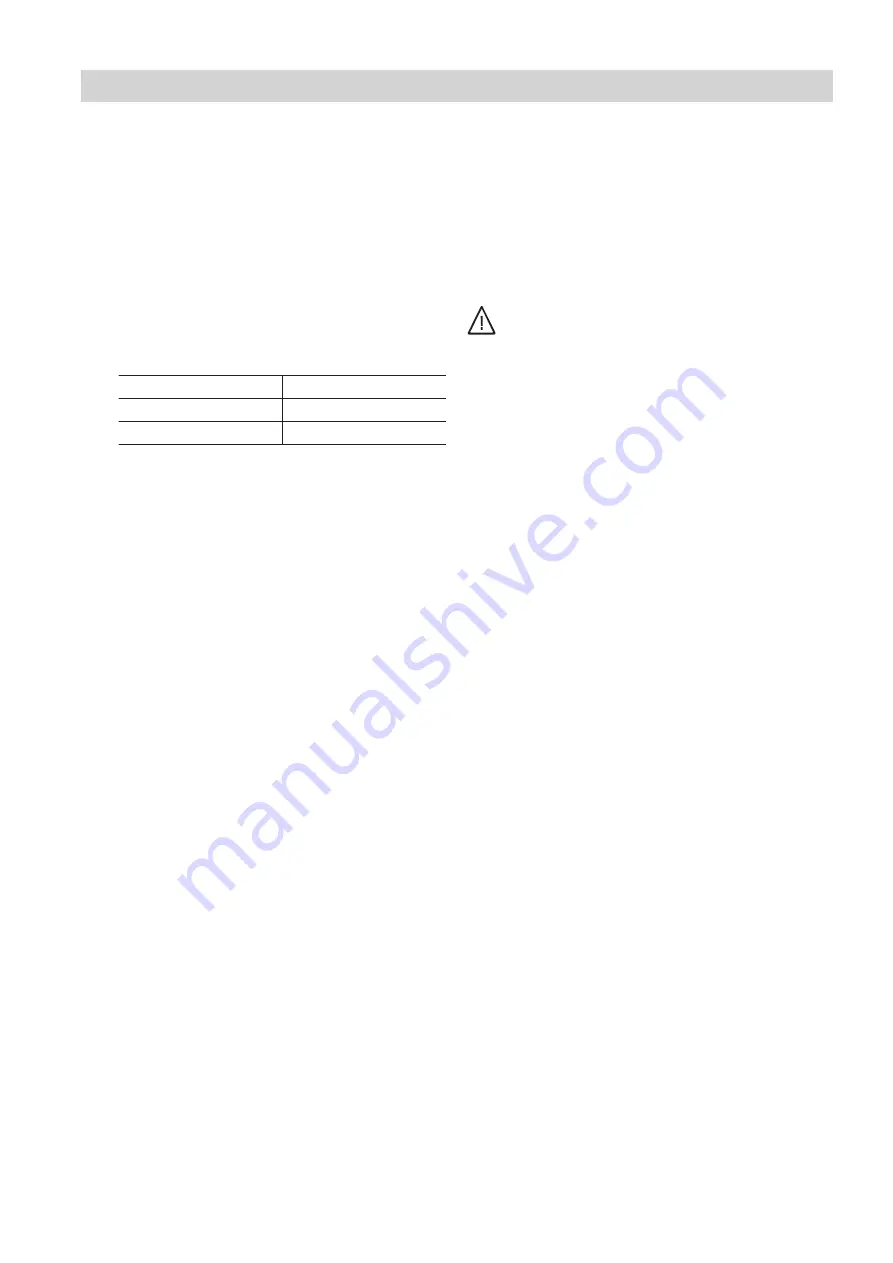
15
Note
We recommend that you use the Viessmann gas sup-
ply pipe (accessories).
1.
Connect the gas supply according to TRGI 2008
[or local regulations].
a
Connect the gas supply according to ÖVGW-
TR Gas 2009 and the regionally applicable
Building Regulations.
c
Connect the gas supply according to SVGW.
■
Gas supply pressure: 20/25 mbar (2/2.5 kPa)
■
Max. permiss. gas supply pressure: 30 mbar
(3 kPa)
■
Gas connection:
Boiler size
Connection
80 kW
G 1
120 to 318 kW
G 1
½
!
Please note
Mechanically loaded gas supply pipes lead
to leaks and appliance damage.
■
When undoing or tightening gas connec-
tions, counterhold with a second open-
ended spanner.
■
Ensure all gas connections are kept free of
load and torque stress.
2.
Carry out a tightness test.
Note
Only use suitable and approved leak detection
agents (EN 14291) and devices for the tightness
test. Leak detection agents with unsuitable constit-
uents (e.g. nitrites, sulphides) can cause material
damage.
Remove residues of the leak detection agent after
testing.
!
Please note
Excessive test pressure will damage the
burner and gas train.
Max. test pressure 150 mbar
. If a higher
pressure is required for tightness tests, dis-
connect the burner and gas train from the
main supply pipe. Undo the fitting.
Note
Just closing the gas shut-off valve is not sufficient.
There is then a risk of pressure entering the valve.
Damage due to excessive test pressure is
excluded from our warranty.
3.
Purge the gas line.
Note
The [German] Combustion Order stipulates that ther-
mally activated shut-off equipment must be installed in
the gas supply line.
If the gas line is contaminated (e.g. old pipes with cor-
rosion products), we recommend installing a gas filter
in the supply line.
Danger
Escaping gas can lead to explosions which may
result in serious injury.
Never purge the gas line through the boiler com-
bustion chamber.
Burner connections on the gas side
5792 916 GB
Summary of Contents for CI1
Page 43: ...43 5792 916 GB ...

















